I went through the annual ritual of CES Unveiled tonight, the opening reception at the Consumer Electronics Show in Las Vegas, where 100 or so companies show off their award-winning gadgets to the press. It was a big crowd, inflated perhaps by the blogosphere that has more than made up for the dwindling numbers of traditional press. Here are my impressions of some of the good gadgets. I snapped pictures with my new Canon Rebel XSi SLR camera.
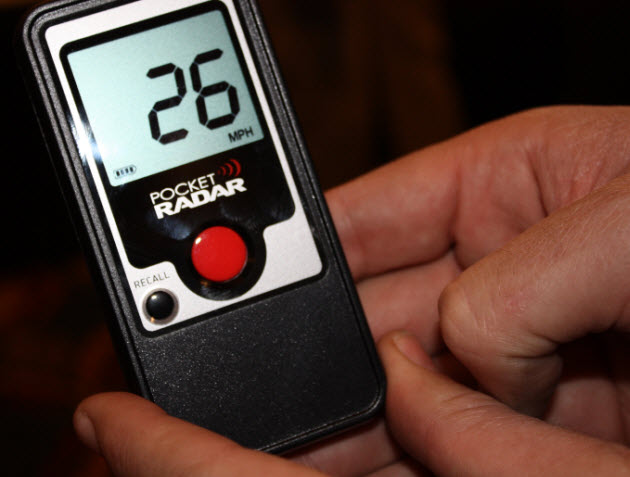
The Pocket Radar, available in March for $249. This radar can measure the speed of just about any moving object. It can measure the speed of a baseball from 120 feet, and the speed of a car from a half mile away. It can measure anything moving from 7 miles per hour to 375 miles per hour, with an accuracy of plus or minus 1 mile per hour. It weighs just 4.5 ounces and measures 4.7 inches by 2.3 inches by 0.8 inches. Inside, it has a couple of microprocessors, high-speed digital signal processor technology, and other sophisticated radar gear. You just point and press the red button.
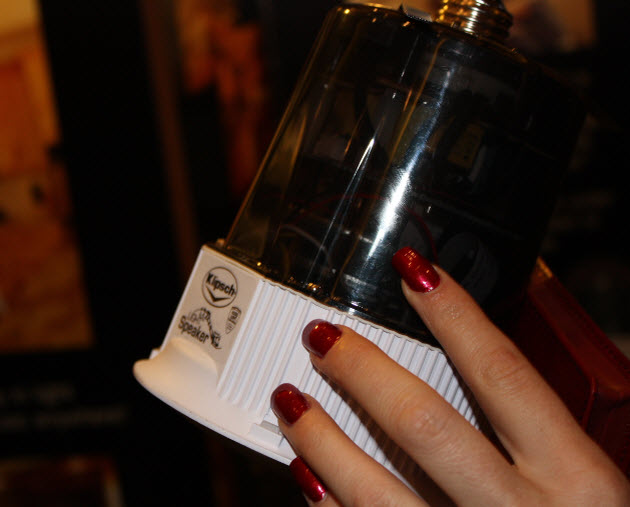
The Klipsch LightSpeaker is an audio speaker that you can hide on top of a ceiling light. So now you’ll never know where the music in your home is playing from. There are all sorts of invisible speakers, some hidden in walls. But this is a weird novelty, and some people might actually pay for it. It costs $599 for a set of two speakers with remote and other stuff. Additional speakers are $249. It will be available in March. It was developed by Kadence.
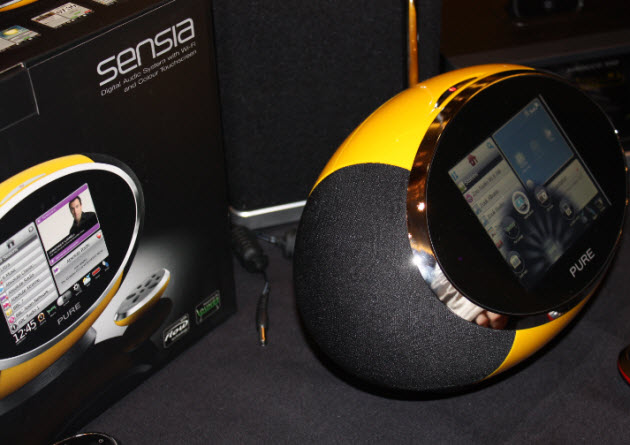 I happened to run into Charles Bellfield, the old huckster who was a spokesman for Sega in the Dreamcast days, God rest its soul. He is general manager for North America at Pure, a division of Imagination Technologies. The company was announcing the line of its Pure digital radio products for North America. It included this Pure Sensia, a round digital radio with Wi-Fi and a color touchscreen. It is available for $349 later this spring or early summer.
I happened to run into Charles Bellfield, the old huckster who was a spokesman for Sega in the Dreamcast days, God rest its soul. He is general manager for North America at Pure, a division of Imagination Technologies. The company was announcing the line of its Pure digital radio products for North America. It included this Pure Sensia, a round digital radio with Wi-Fi and a color touchscreen. It is available for $349 later this spring or early summer.
AI Weekly
The must-read newsletter for AI and Big Data industry written by Khari Johnson, Kyle Wiggers, and Seth Colaner.
Included with VentureBeat Insider and VentureBeat VIP memberships.
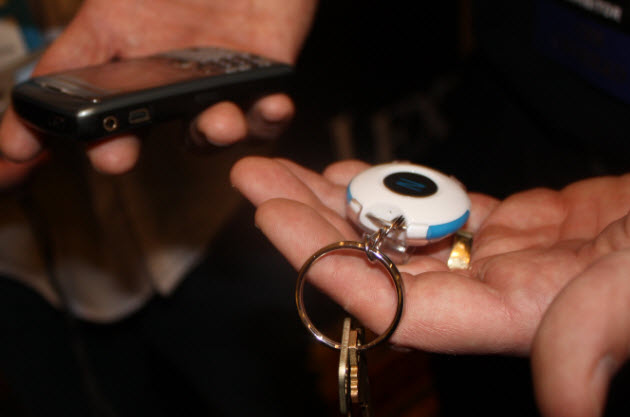
Zomm unveiled a Bluetooth wireless leash. It will sound an alarm if you walk away from your mobile phone, making it easier not to forget it somewhere. The Zomm device goes on your key ring and is wirelessly paired with your mobile phone via Bluetooth wireless. If you walk out of range, Zomm will vibrate and flash lights. It will also provide you with a sound alert for incoming calls when your phone is out of sight. You can answer a call by pressing a button. Then you can use Zomm as a speaker phone. It will be available in the second quarter. It also has a security panic alarm that makes noise when you press it. It lasts three days on a battery charge. Price is to be determined.
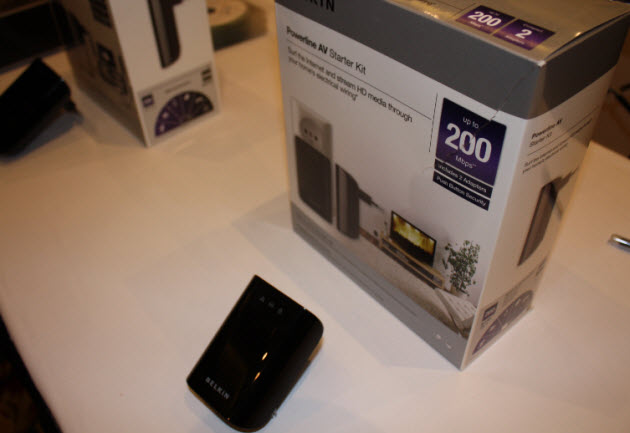
Gigle Networks was showing off what its customer, Belkin, can do with a powerline. You plug your Ethernet wire for a computer into the device, which plugs into a wall. It then sends the Internet data through the electrical wires of your home to another plug, which converts the data back into the form that can travel over an Ethernet wire. You can thus use it to extend a fast Internet connection– 200 megabits a second — into another room. That’s fine and dandy, and rivals such as DS2 and Intellon (now owned by Atheros) can do it too. But Gigle’s chips will be built into new unannounced devices coming in the first quarter that can become universal Internet adapters. That is, one device can be used to extend your Internet connection over the phone lines, coaxial cable (cable TV line), or power lines. This universal adapter is going to solve a lot of problems for people who can’t handle home Wi-Fi or want faster traffic lanes within their homes.
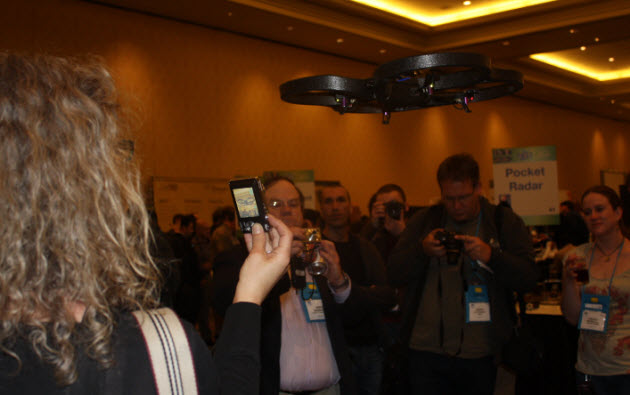
The AR.drone is a radio-controlled quadricopter. It’s a toy helicopter with four spinning rotors that can hover vertically and move around. You can remotely pilot the drone by holding a remote control (which could be your iPhone or iPod Touch). Just about anyone can control it. You can play games with it and fight duels with others on a Wi-Fi network. The drone is made by Parrot. There is no pricing or availability info yet.
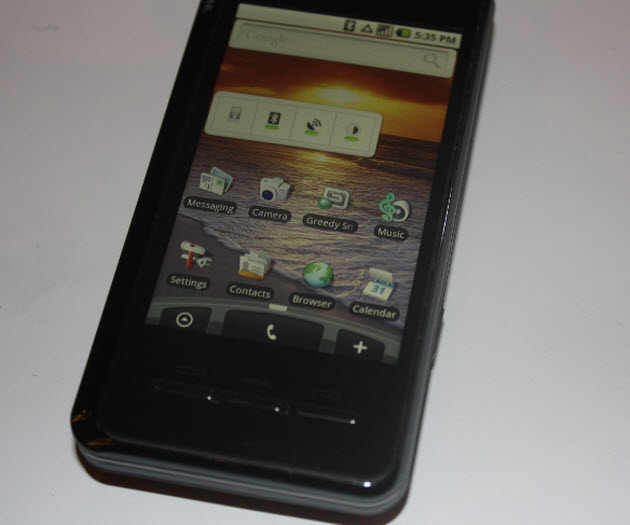
Saygus was showing off the Vphone, a device that has been 12 years in the making. It’s designed to be able to do two-way video conferencing even when there is a low-bandwidth cellular connection. The video calls will run at 24 frames per second, all the way up to 30 frames per second. That’s as fast as television. It sounds impossible, but Sayers said the company worked on the proprietary compression technology to make it happen. Chad Sayers, founder of the company, said the company will launch it in the second quarter on a GSM cell phone network. The Android-based phone has no carrier and will be unlocked. It has a 3.5-inch screen and a Marvell PXA 310 624-megahertz processor. It can play standard video types such as MPEG-2 or H.264. Sayers said Fox News will show off the phone live on a video call on Friday. We’ll all believe it when we see it.
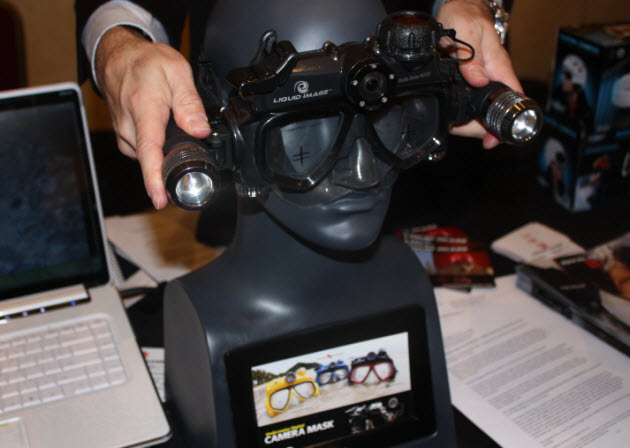
Liquid Image showed off its Wide Angle Video Mask for scuba divers. It has a video camera built into the face plate of a diving mask. It has an internal 16-gigabyte memory, or you can put in a micro-SD memory card into a waterproof compartment of the mask. Then you can snap pictures or shoot video by pressing a lever on a side of the mask. It sells for $200 and will be available in June. It has a five-megapixel camera with a 135 degree wide angle lens and can record video with a resolution of 720p at up to 30 frames per second with audio. There are versions for skiers, climbers, and others. A 16GB card can record up to 5.33 hours of video or thousands of still images. It operates on two AAA batteries.
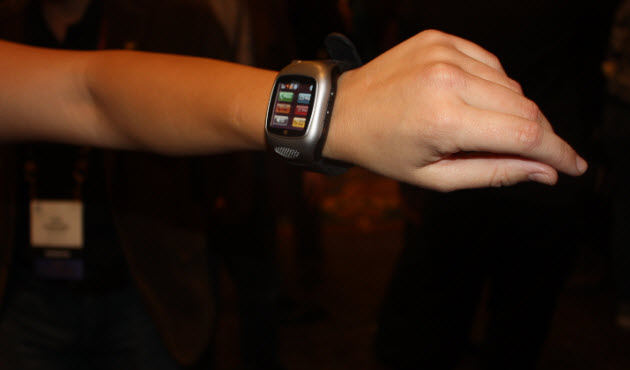 Kempler & Strauss and the VNA Group showed off the W Watch Phone. You can use it as an unlocked speaker phone on a quad-band GSM cell phone network. You can also pair it with the company’s own Bluetooth headset. It has a touchscreen and can be as a camera, camcorder, music player, and for sending text messages via a virtual keyboard. It costs $199 and will be available at the end of the first quarter. Compare that to LG’s watch phone which is big and costs $1,200.
Kempler & Strauss and the VNA Group showed off the W Watch Phone. You can use it as an unlocked speaker phone on a quad-band GSM cell phone network. You can also pair it with the company’s own Bluetooth headset. It has a touchscreen and can be as a camera, camcorder, music player, and for sending text messages via a virtual keyboard. It costs $199 and will be available at the end of the first quarter. Compare that to LG’s watch phone which is big and costs $1,200.
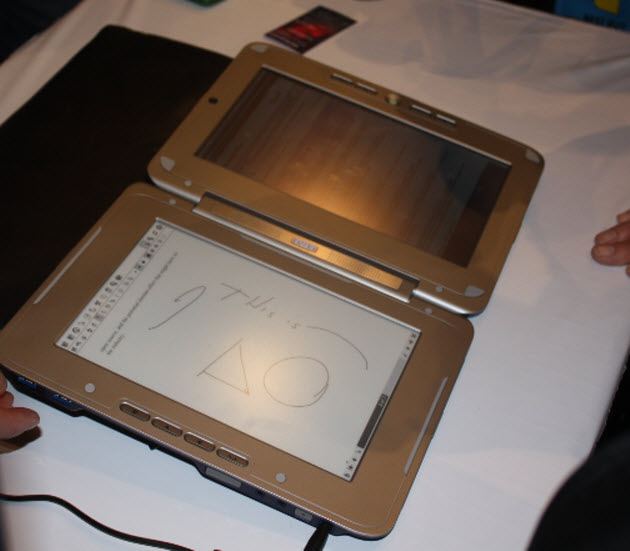 Entourage Systems showed off an Edge eBook reader with two screens. It looked pretty cool. You could read a page in Digital Ink on the right screen and then make notes on the left screen. The right screen is a 9.7 inch black and white E-ink screen that you can use to read eBooks. The left screen is a 10.1-inch color LCD screen that can be used to write notes, surf the web, watch videos, draw on or send messages with a virtual keyboard. The screens can be folded clamshell style when you aren’t using it. It will be available in February for $490.
Entourage Systems showed off an Edge eBook reader with two screens. It looked pretty cool. You could read a page in Digital Ink on the right screen and then make notes on the left screen. The right screen is a 9.7 inch black and white E-ink screen that you can use to read eBooks. The left screen is a 10.1-inch color LCD screen that can be used to write notes, surf the web, watch videos, draw on or send messages with a virtual keyboard. The screens can be folded clamshell style when you aren’t using it. It will be available in February for $490.
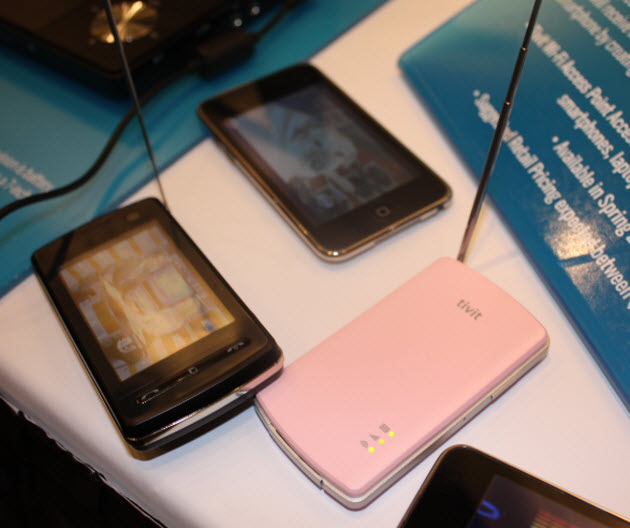 The Tivit from Valups is a wireless mobile digital TV receiver that lets your smartphone or laptop get a local digital TV signal. It can receive Mobile Digital Television signals sent by local broadcasters. About 30 of them are using it now. It is based on a similar product sold in Japan that lets Wi-Fi phone users watch TV signals. The transmission standard for Mobile DTV was adopted in October, and it competes with a proprietary standard created by Qualcomm for FloTV. Tivit works with a Wi-Fi mobile device, paired together, to let you watch shows with the local digital TV programs. Tivit is two inches by 3.5 inches in size and it weighs 2.8 inches. It will debut in the spring for $120.
The Tivit from Valups is a wireless mobile digital TV receiver that lets your smartphone or laptop get a local digital TV signal. It can receive Mobile Digital Television signals sent by local broadcasters. About 30 of them are using it now. It is based on a similar product sold in Japan that lets Wi-Fi phone users watch TV signals. The transmission standard for Mobile DTV was adopted in October, and it competes with a proprietary standard created by Qualcomm for FloTV. Tivit works with a Wi-Fi mobile device, paired together, to let you watch shows with the local digital TV programs. Tivit is two inches by 3.5 inches in size and it weighs 2.8 inches. It will debut in the spring for $120.
VentureBeat's mission is to be a digital town square for technical decision-makers to gain knowledge about transformative enterprise technology and transact. Learn More